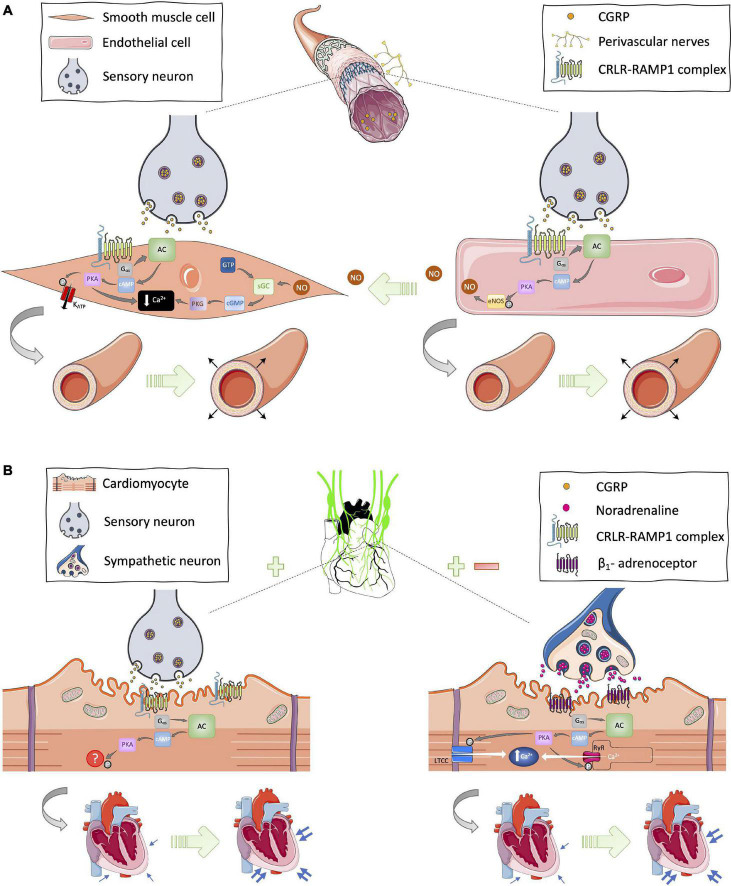FIGURE 1.
Proposed cardioprotective mechanisms of CGRP in the (A) vasculature and (B) myocardium. (A) In the vasculature, CGRP circulating in the blood or released from sensory neurons can bind on to its canonical receptor, the CRLR-RAMP1 complex, expressed in the plasma membrane of vascular smooth muscle and endothelial cells to initiate Gαs-protein signal transduction and subsequently cause relaxation of smooth muscle cells via nitric oxide (NO)-dependent and -independent mechanisms thus leading to vasodilation. (B) In cardiac tissues, there is evidence for CGRP-stimulated modulation of sympathetic outflow and expression of the CRLR-RAMP1 complex on cardiomyocytes. Hence, CGRP has the potential to induce Gαs-protein signaling from sensory and sympathetic nerves leading to increased cardiac contractility, thus positive inotropy and chronotropy. AC, adenyl cyclase; cAMP, cyclic adenosine monophosphate; cGMP, cyclic guanosine monophosphate; eNOS, endothelial nitric oxide synthase; GTP, guanosine triphosphate; KATP, ATP-sensitive potassium channels; LTCC, L-type calcium channel; NO, nitric oxide; P, phosphate; PKA, protein kinase A; RyR, ryanodine receptor; sGC, soluble guanylate cyclase. [Images were obtained from smart.servier.com under a Creative Commons Attribution 3.0 Unported License].

